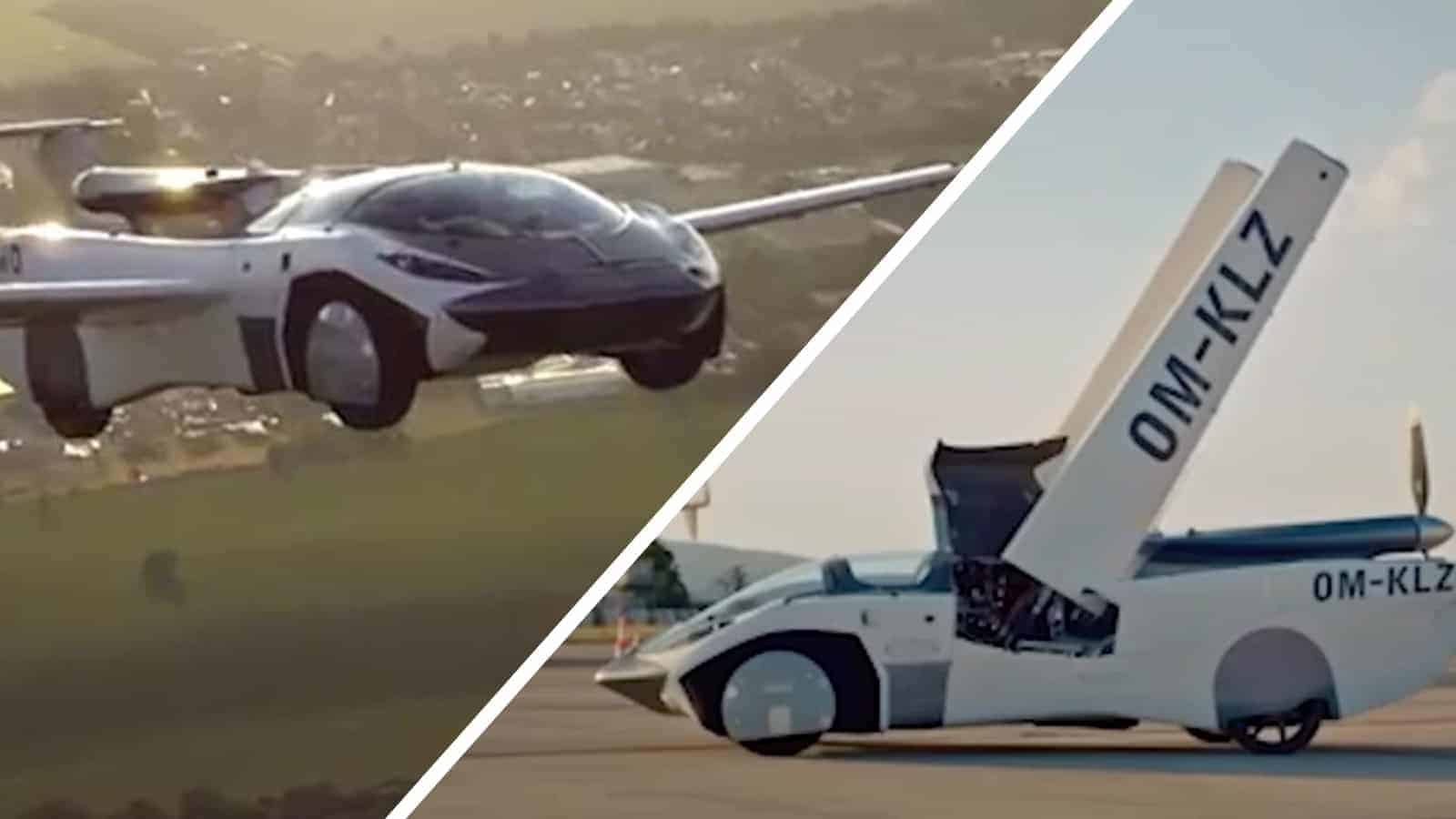The flying car may make its way from science fiction to reality. In fact, a BMW-powered prototype flying car completed its first 35-minute test flight in Slovakia. According to a press release, Klein Vision’s AirCar flew between the international airports of the capital Bratislava and Nitra.
On June 28th, 2021, the test flight marked a vast development milestone for the company, with production on the horizon. The dual-mode car-aircraft vehicle completed its 142nd successful landing that day at the Bratislava airport. Professor Stefan Klein and co-founder Anton Zajac drove the car, which transformed into a sports car within three minutes upon landing. They sped off toward the city center next, cutting their travel time by 50%.
Dr. Branko Sarh, Boeing Co. Senior Technical Fellow, said Klein leads the pack in developing user-friendly flying cars. He added that the quick transition from road to air vehicle along with the deploying/retracting wings marks an ingenious feat of engineering.
EDITORIAL UPDATE: This car passed final certifications and was cleared by Slovakian authorities for takeoff in January of 2022.
Specifications of the BMW-powered flying car
A 160 horsepower BMW engine powers the flying car, and it comes equipped with a fixed propeller and ballistic parachute. With the Civil Aviation Authority supervising, the AirCar completed 40 hours of test flights. This includes sharp 45 degree turns along with stability and maneuverability testing. According to Klein Vision, the AirCar Prototype 1 reached 8200 ft and a maximum cruising speed of 190km/h (118mph).
As he stepped out of the car in Bratislava, Klein added that the 35-minute flight marks a new era of dual-mode vehicles. It opens new doors in the transportation sector and provides car owners with exciting possibilities. Anton Zajac added that AirCar isn’t just a proof of concept any longer – flying cars have now become a reality.
According to the website, “AirCar is composed of several functional units. Its aerodynamic fuselage provides enough space for the passengers and, at the same time, contributes to better lift characteristics during the flight. Among advanced technologies are the retractable wings, folding tail surfaces, parachute deployment system, etc.
“The folding tail surfaces contribute to a better longitudinal stability and take-off characteristics, just like in a conventional aircraft. However, in the car mode, retracted tail results in a more compact size.”
Klein’s vision for future flying car models
The company’s next project, AirCar Prototype 2, will include a more powerful 300HP engine and variable pitch propeller. This innovation will help reduce drag and increase glide distance in instances of engine failure. In addition, the adjustable blade angles remain efficient at various airspeeds.
The prototype will receive the EASA CS-23 aircraft certification with an M1 road permit. It’s expected to cruise at 300 kilometers per hour (186 miles per hour) and have a range of 1,000 kilometers (621 miles). In the future, Klein Vision aims to develop models of the AirCar, which can seat three or four people. They also want to create twin-engine and amphibious vehicles to expand product lines.
According to Morgan Stanley, the flying car market will be worth an estimated $1.5 trillion by 2040.
Other companies working on flying cars
It seems that the future of cars will include mostly air travel, something people have only dreamed about. Now, it’s starting to become a reality. Many other companies have begun jumping on board with the creation of flying cars.
However, safety and reliability remain a concern since the cars haven’t hit the market yet. It could take years to ensure they can operate safely among other air traffic. They also would need to undergo rigorous testing, which could take a while.
What’s next in the emerging flying car industry?
Hyundai launched a dedicated Urban Air Mobility Division in 2019, led by former NASA engineer Jaiwon Shin. The company announced that it would invest $1.5 billion in urban air taxis by 2025.
Uber and Hyundai have plans to create a flying electric-powered taxi, announcing 2020’s Consumer Electronics Show. According to Reuters, the flying taxis could become operational by 2025, three years earlier than anticipated. The air taxis would have the capacity to carry five or six people from city centers to airports.
General Motors (GM) also announced plans to enter the electric air taxi market. However, an executive said it could take until 2030 to become operational due to regulatory challenges. In the meantime, they’re working on other ideas, unveiling a Cadillac flying car concept in January 2021,
Volkswagen also said they’re exploring options in China to build their version of a flying car. In addition, Boeing and Porsche have begun collaborating to develop flying vehicles.
Japanese company Sky Drive Inc. completed a successful test flight of a flying car in August 2020. It marked the first public demonstration of a flying vehicle in Japanese history. The vehicle took off from the Toyota Test Field, one of the largest in Japan and ground zero for the company’s development. It remained airborne while circling the field for four minutes.
The car, called SD-03, is the world’s smallest electric vertical takeoff and landing (eVTOL) vehicle. It’s about the size of two parked cars, according to the company. To ensure safety should emergencies arise, it’s equipped with a whopping eight motors. The company will conduct more test flights in the future to ensure the car meets industry standards.
 Final Thoughts: Flying cars may be the future of inter-city travel
Final Thoughts: Flying cars may be the future of inter-city travel
Imagine hopping in your car and flying off to a distant city in a matter of hours. You wouldn’t have to wait in long lines at the airport or deal with lost baggage. People have been dreaming of a future with flying cars for years, and it looks like the world is getting closer every day. Many companies have begun working on flying car prototypes, including Klein Vision.
His AirCar Prototype 1, however, marks the first flying car to successfully travel between cities for 35 minutes. It’s exciting to think about how flying cars will progress and shape our world in the future.


















